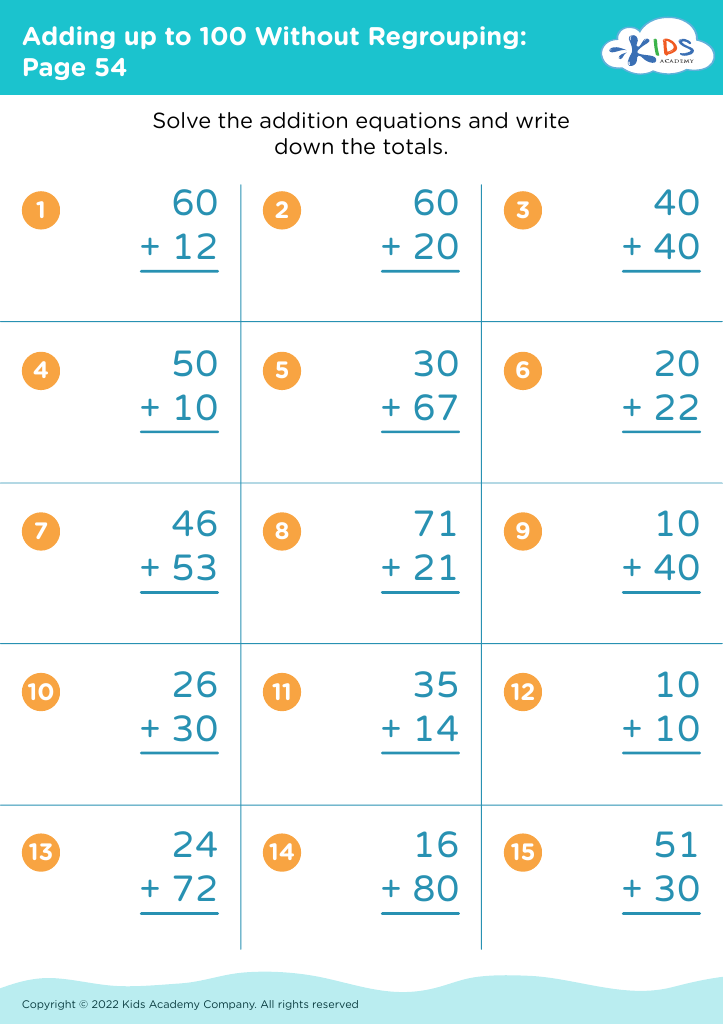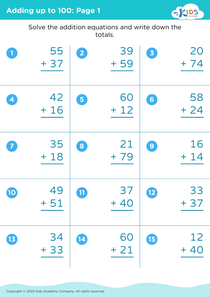Comparing Fractions Adding up to 100 Without Regrouping Worksheets for Ages 7-8
11 filtered results
-
From - To
Explore our engaging "Comparing Fractions Adding Up to 100 Without Regrouping" worksheets, specifically designed for ages 7-8. These worksheets help young learners develop essential math skills by comparing fractions in a fun and interactive way. Perfect for reinforcing classroom learning or supporting at-home practice, each worksheet encourages critical thinking and enhances understanding of fractions, ensuring students feel confident when handling mathematical concepts. Ideal for teachers and parents alike, our resources foster a love for math while promoting essential foundational skills. Dive into our collection today and empower your child’s mathematical journey!
Parents and teachers should care about comparing fractions that add up to 100 without regrouping for children aged 7-8 because it significantly develops critical mathematical skills essential for their overall academic growth. At this age, children are navigating fundamental concepts of fractions, which form the basis for more complex mathematical operations in later grades. Understanding how to compare fractions promotes numerical literacy and bolsters problem-solving abilities.
When children learn to compare fractions, it enhances their ability to recognize relationships between numbers. This skill is invaluable not only in mathematics but in daily life situations, such as cooking, shopping, or sharing. By focusing on fractions that sum to 100, children are encouraged to think about parts of a whole in a concrete way, making abstract concepts more tangible.
Additionally, this topic aligns with various educational standards, fostering quantitative reasoning and analytical thinking. It also provides insightful opportunities for engagement and collaboration among peers, encouraging teamwork in learning. Ultimately, mastering fractions greatly increases children's confidence in their mathematical skills, preparing them for future challenges and instilling a solid foundation for lifelong learning. Therefore, supporting children in this area is crucial for their success within and beyond the classroom.

























